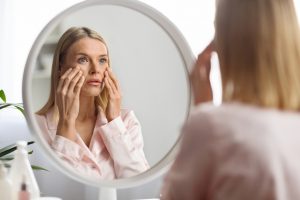Don’t Let The Sun Dim Your Sight This Summer Holiday Season
As summer approaches and the sun’s rays grow stronger, it’s essential to safeguard your eyes against ultraviolet (UV) radiation. Enjoying the sun is great fun, but you need to take some simple precautions to ensure you’re as safe as possible. This may include wearing sunglasses that block out UV rays, ensuring you can see properly but also remain protected.
The experts at Oakley explore five essential tips for protecting your eyes against harmful UV damage during the summer months and beyond.
Oakley’s 5 Top Tips To Protect Your Eyes
Wear High-Quality Sunglasses
Invest in high-quality sunglasses that offer 100% UV protection. Opt for sunglasses that block both UVA and UVB rays to provide a comprehensive defence against harmful radiation. Oakley says, ‘Look for sunglasses labelled with UV400 or “100% UV protection” to ensure maximum coverage. Wearing sunglasses whenever you’re outdoors, even on cloudy days, helps reduce the cumulative effects of UV exposure on your eyes.’
Choose Wraparound Styles
Opt for wraparound sunglasses or those with large lenses that provide ample coverage for your eyes. Wraparound styles offer enhanced protection by minimising UV exposure from the sides and top of the sunglasses. This design feature helps reduce the risk of UV-related eye conditions, such as photokeratitis (sunburn of the cornea) and pterygium (growth on the eye’s surface).
Limit Your Direct Exposure
Oakley advises, ‘Avoid prolonged exposure to direct sunlight, especially during peak UV hours, typically between 10 a.m. and 4 p.m. Seek shade whenever possible, especially if you’re engaging in outdoor activities for an extended period.’ Using umbrellas, hats with wide brims, or wearing UV-blocking clothing can provide additional protection against UV rays while enjoying outdoor adventures.

Check Lens Quality And Tint
Ensure your sunglasses provide adequate lens quality and tint to reduce glare and enhance visual comfort in bright conditions. Look for sunglasses with polarised lenses to minimise glare from reflective surfaces like water, sand, or pavement. Polarised lenses also enhance contrast and clarity, making them ideal for outdoor activities such as boating, driving, or sports.
Replace Old And Damaged Glasses
Regularly inspect your sunglasses for signs of wear or damage, such as scratches, loose hinges, or distorted lenses. Replace sunglasses as needed to maintain optimal eye protection and clarity of vision. Additionally, clean your sunglasses regularly with a gentle lens cleaner and microfiber cloth to remove the dirt, oils, and debris that can obstruct your view and compromise UV protection.
What Are The Risks of UV Rays?
Prolonged or unprotected exposure to ultraviolet (UV) rays can contribute to the development of several eye conditions and diseases. Oakley warns, ‘One significant risk is the increased likelihood of developing cataracts, a clouding of the eye’s natural lens, which can lead to blurry vision and eventual vision loss if left untreated.’
UV radiation exposure has also been linked to the development of age-related macular degeneration (AMD), a leading cause of vision loss in older adults, characterised by damage to the macula, the central part of the retina responsible for sharp, central vision.
Additionally, UV exposure can contribute to the formation of pterygium, a growth of tissue on the surface of the eye that can cause irritation, redness, and discomfort. ‘UV radiation exposure has also been associated with photokeratitis, often referred to as “sunburn of the cornea,” which manifests as temporary but painful inflammation of the cornea, resulting in symptoms such as redness, tearing, and sensitivity to light,’ says Oakley.





